Spurring Collaboration Among Scientists, Engineers
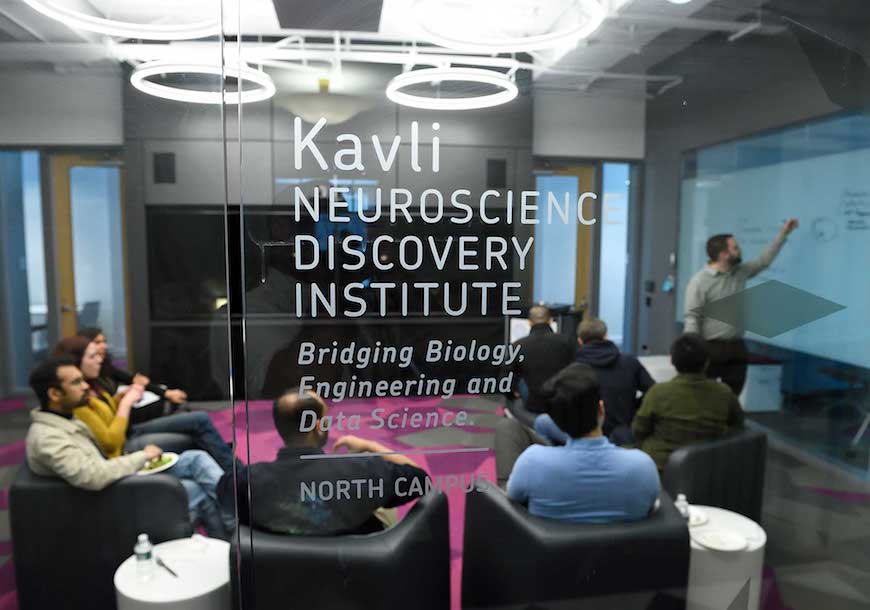
It’s a quiet Thursday afternoon in Clark Hall; many of its usual inhabitants have left the Homewood campus for spring break. Then, from the third floor, in the Johns Hopkins Kavli Neuroscience Discovery Institute’s (NDI) glass-enclosed meeting space, comes a riot of noise.
There, Simon Allard is using a dry-erase marker to sketch a rat brain on a wall in front of a group of fellow researchers. The group — all Kavli NDI Postdoctoral Fellows — watch, listen, and ask questions as Allard shares updates on his project. One audience member mentions a new set of algorithms his lab is producing that might apply to Allard’s project. Another brings up a recent study about the influence of light strobes on neurodegeneration.
“Great! Let’s take grandma to a rave!” one fellow says, and the entire floor echoes with laughter. The lighthearted moment underscores a significant part of what the Johns Hopkins Kavli NDI, established by a joint $20 million commitment by Johns Hopkins and the Kavli Foundation, hopes to accomplish in uniting researchers among neuroscience, engineering, and data science: collaboration.
“A lot of science is solitary — you’re the only one who knows your question and what you’re looking for. Through Kavli, the collaboration has been outstanding,” says fellow Audrey Branch, a neuroscientist who studies how memory circuits in the brain change with age.
“Neuroscience is going in a direction where we need better tools and methods to image the brain. This requires new devices — and engineers are developing really novel ways to do that,” says Rick Huganir, a Bloomberg Distinguished Professor who serves as co-director of the Johns Hopkins Kavli NDI and director of the Solomon H. Snyder Department of Neuroscience.
Before coming to Hopkins, Allard spent much of his career studying age-associated neurological diseases like Alzheimer’s using biochemical approaches, which he says offer indirect measurements of neurodegeneration. He sought a more precise measurement of how neurological systems operate in vivo and, with support from his Kavli NDI fellowship, is developing a new molecular tool to do just that.
“The Kavli Institute encourages ambition by propelling very new lines of investigation, solidifying collaborative work that will, down the line, be appealing to main funding agencies,” Allard says.
Today, our faculty, clinicians, and students are making advancements in drug development, biotechnology, robotics, and social enterprise that address challenges locally and globally. Even our undergraduate students are transforming disruptive ideas into new business innovations — sometimes even before they graduate.
In our labs, technology incubators, and undergraduate residence halls, we’re bringing the life-changing innovations of Hopkins to Baltimore and the world.
Helping Bring Life-Changing Innovations to the World
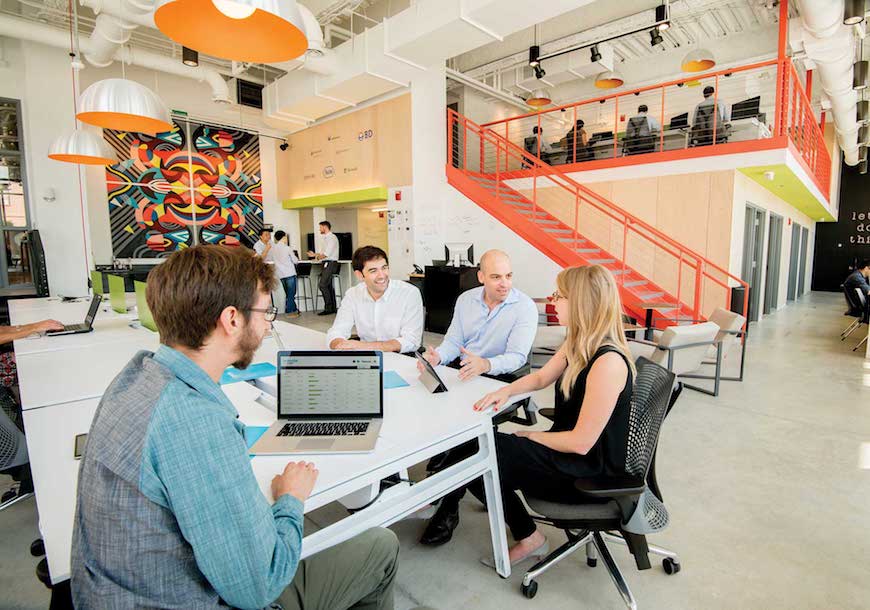
Across decades and disciplines, Johns Hopkins has served as a powerful catalyst for discovery, a rich source of innovation that improves lives around the world. Our faculty, clinicians, and students are constantly creating new knowledge and developing new technologies and working to deliver these as products and services that can be put to positive use in the world.
Johns Hopkins Technology Ventures (JHTV) serves as a catalyst for innovation and entrepreneurship across the institution, committed to ensuring that the life-changing discoveries and innovations cultivated in labs and residential halls make it to the market as quickly as possible.
Thanks to philanthropic support, JHTV provides four world-class innovation hubs on Hopkins’ Homewood and East Baltimore campuses, including FastFowardU, a student-focused innovation hub and associated programs that teach and empower the next generation of entrepreneurs. It also provides a suite of services, including mentorship, educational boot camps, trainings, and networking opportunities to help faculty, clinicians, and students commercialize their ideas and technologies.
JHTV seeks to promote the development of dynamic leaders, novel products, and growing companies in Baltimore — while strengthening and diversifying our regional economy.
A lot of researchers are intimidated by lots of data, so they remain in methodologies where they’re comfortable. But what if there’s something better? I can’t dream bigger if I don’t know the possibilities of what’s out there, and Kavli helps with that.”
Helping Students and Teachers Grow
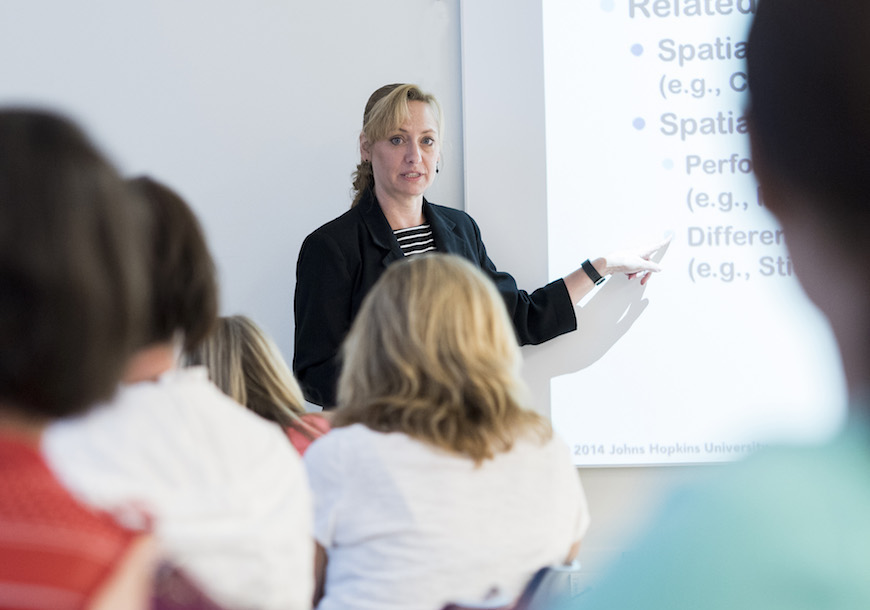
Amy Shelton, PhD, the associate dean of Research and Doctoral Programs at Johns Hopkins’ School of Education, is teaming up with the Overdeck Family Foundation on a project that examines teacher priority in U.S. schools.
“Many people are aware of the difference between proficiency and growth,” Shelton says. “And we have a lot of emphasis on proficiency, especially in this country. But the issue with proficiency as a standard is that it puts teachers in a position where what they have to show is the number of students being proficient. They can essentially categorize students.”
But students at the top and bottom of the class often do not get as much teacher attention as those in the middle, or the “bubble students.”
“In the harshest terms, we refer to it as triage, where those at the very bottom, you can’t help them,” Shelton explains. “Those at the very top are fine. Those in the middle, which we refer to as the ‘bubble students,’ those are the ones where they think their attention needs to go most.”
The study has focused on the issue of “bubble students.” So far, researchers have found that teachers are most focused on those students in the middle.
“But what about those students in those other quadrants. So a student who’s got high proficiency but almost no growth. Why do we find that acceptable?” Shelton says. “If you think about a system where the goal is to meet student needs, there’s a whole range of students who have needs, both at the bottom and the top and in the middle, and many of those are probably not being met.”
The Malone Effect
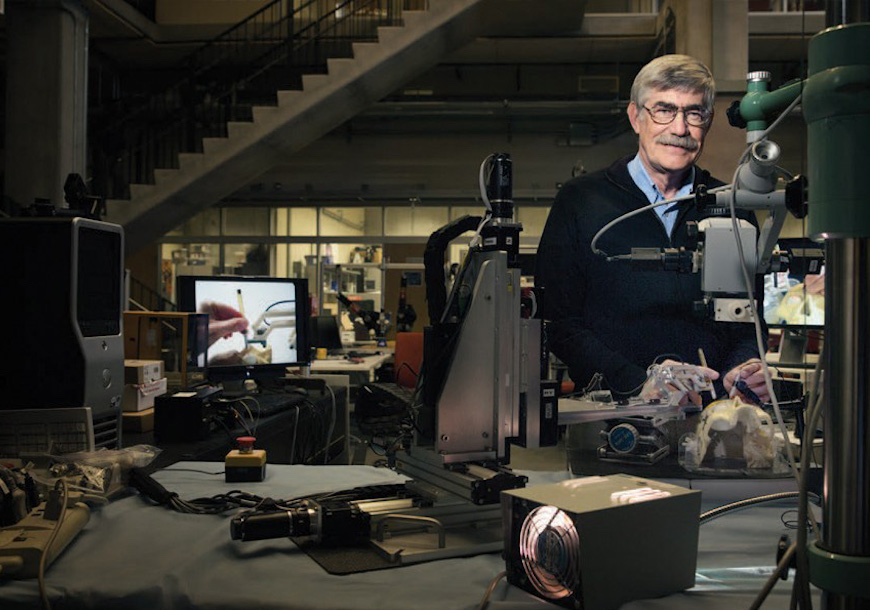
Russell Taylor recalls the many hours he spent as a Johns Hopkins undergraduate writing computer programs in the Eisenhower Library for his adviser, Mandell Bellmore. The programs implemented an algorithm designed by another Bellmore advisee, John Malone. Taylor, Engr ’70, couldn’t have predicted that Malone, Engr ’64 (MS), ’69 (PhD), would one day become his benefactor.
But in 2011, Taylor received the first in a series of professorships endowed by Malone, a pioneer in communications and media and current chairman of Liberty Media Corporation and Liberty Global Inc. The John C. Malone Professorships support faculty whose work crosses the borders of multiple disciplines, particularly engineering and medicine. To date, 10 faculty members have been named Malone Professors. All are part of the new John C. Malone Center for Engineering in Healthcare housed in Malone Hall, whose construction was supported by a previous gift from Malone in 2011.
“The commitment John Malone has made to our faculty through Malone Hall and these professorships ensures that, in partnership with our colleagues in the School of Medicine, we will deliver on our promise to help transform health care and make an impact on patients and systems around the world,” says Ed Schlesinger, dean of the Whiting School.
Taylor has been making that kind of impact for decades. He joined the Johns Hopkins faculty in 1995 after working at IBM’s Thomas J. Watson Research Center for 19 years. There, he led a team that developed the prototype for Robodoc, considered the first surgical assistant robot for major procedures. Taylor has licensed his patents to some of the world’s largest medical robotics companies, and in 2015, he received the Honda Prize for his contributions in medical robotics.
“Engineering culture is very much about solving problems in the world,” says Taylor, who directs both the Engineering Research Center for Computer-Integrated Surgical Systems and Technology and the Laboratory for Computational Sensing and Roboticsat Johns Hopkins. “The constant in my research has been a partnership between physicians and robotics, and the desire to change processes. A lot of my work is focused on getting each individual patient the best intervention.”
A Breakthrough Curriculum in Jazz Studies
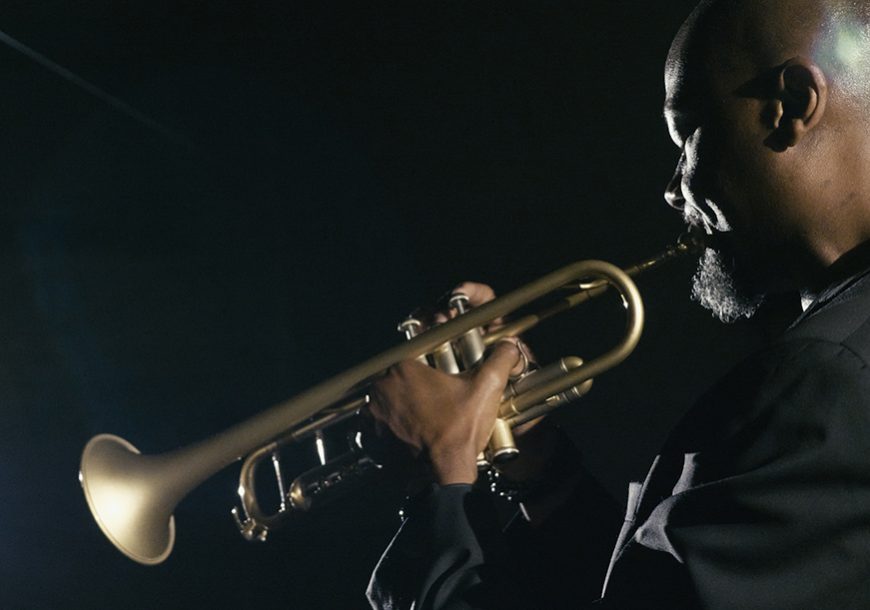
Sean Jones, MM and the Richard and Elizabeth Case Chair of Jazz Studies at the Peabody Institute, is leading the conservatory in a new curriculum that will help students meet the demands of today’s ever-changing musical landscape. He’s also teaching them the unifying history of jazz.
“Jazz is uniquely American in that it fuses cultures. We have the marriage of African rhythms with European harmonies,” Jones explains. “And with the new Breakthrough Curriculum, Peabody has a wonderful opportunity for being the curator of this music, jazz and classical music. And it’s true fusion in that it is the oldest conservatory in this country.”
Founded in 2001, the Jazz Studies Department has become one of the most comprehensive areas of study within Peabody.
“The changes in the jazz program are going to break down the walls that have taken place between jazz and classical music over time,” Jones says. “Then we can begin to really express what it means to be an American musician at the highest level. And if we go out into the community – bridging gaps, bringing people together – this is indeed history. It’s a defining moment.”